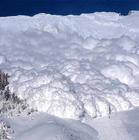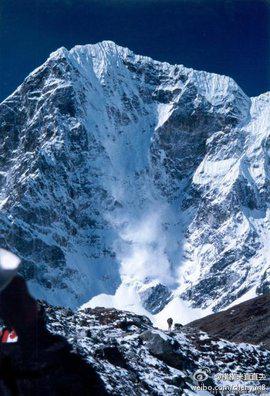The avalanche is divided into wet avalanche (also called block avalanche), dry avalanche (also called powder avalanche). Their formation and occurrence have different morphology and climatic conditions.
Wet avalanches may be the most dangerous. Wet avalanches usually occur after a few days of precipitation, as the surface snow melts and sinks into the lower snow layers and refreezes, forming a "wet snow layer".

In winter or spring, after snow the temperature will continue to rise, making it impossible for new wet snow layers to be absorbed on the original ice with smaller density so the wet snow slides down, forming avalanche.
Wet avalanches are nuppy, slow, heavy, dense, and like ink stains on a snowy slope and they can become bigger and bigger so the destructive power is stronger.
The formation of such avalanche usually occurs on a slope with gentle slope because when the loose snow on the steep slope is almost finished, avalanche will form on gentle slope. Its descent speed is slower than an avalanche, taking up trees and rocks along the way and creating more big snow gravel.
But once you get involved in a block avalanche, you'll never be as lucky as in a dry avalanche. And once it stops, it will solidify immediately, often making the rescue work very difficult.
Dry avalanches carry a lot of air, so it behaves like a fluid. This kind of avalanches were so high that they flew down from the high mountains and swallowed all things instantly, even ran up to the opposite slope after running down the slope. In general, when the snow has just stopped and the snow in the mountains has not yet melted or before the melted water seeps into the lower snow to freeze, the snow is "dry" and "powder". When such kind of avalanches happens, the air waves are very large, and the bottom layer easily forms air cushion. When an expedition team encounters such avalanches, one can be encased in an avalanche and descend with an avalanche. But dry avalanches and powder avalanches have a relatively small threat to explorers.

Comment list ( 0 )
